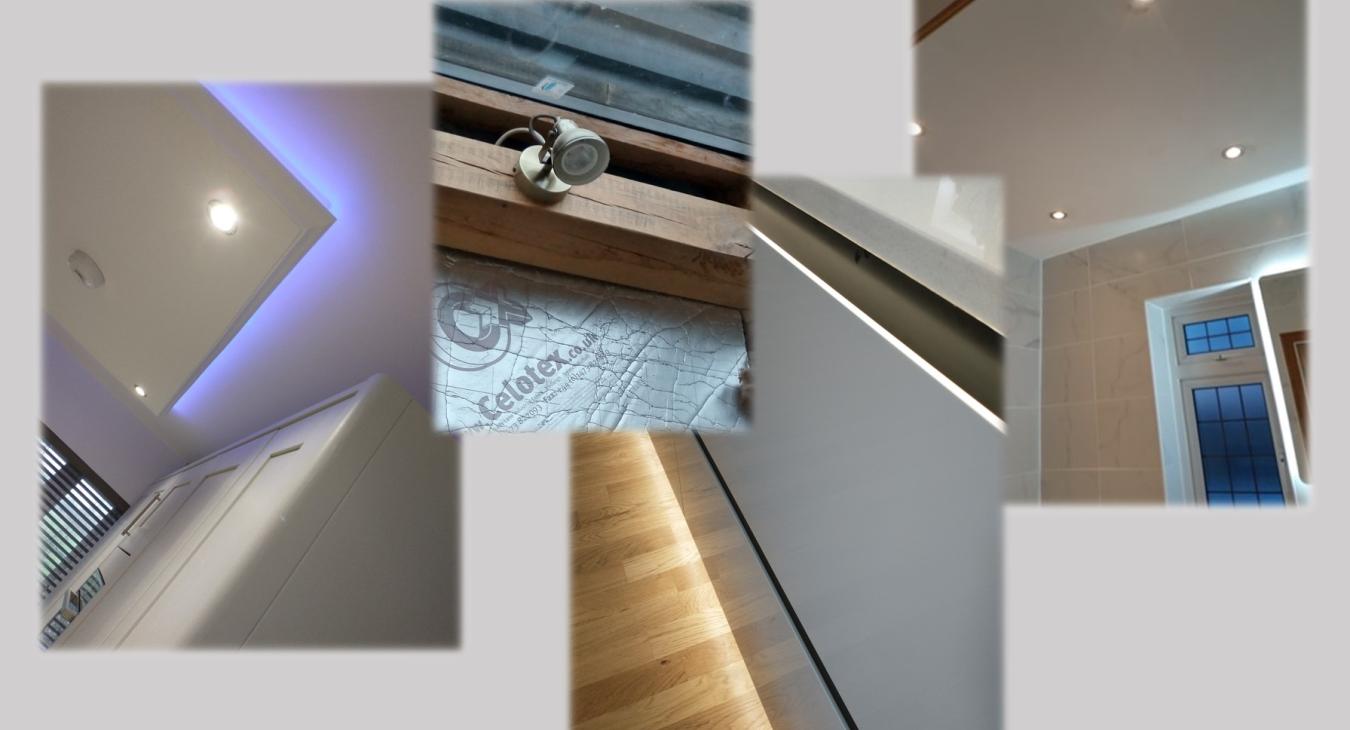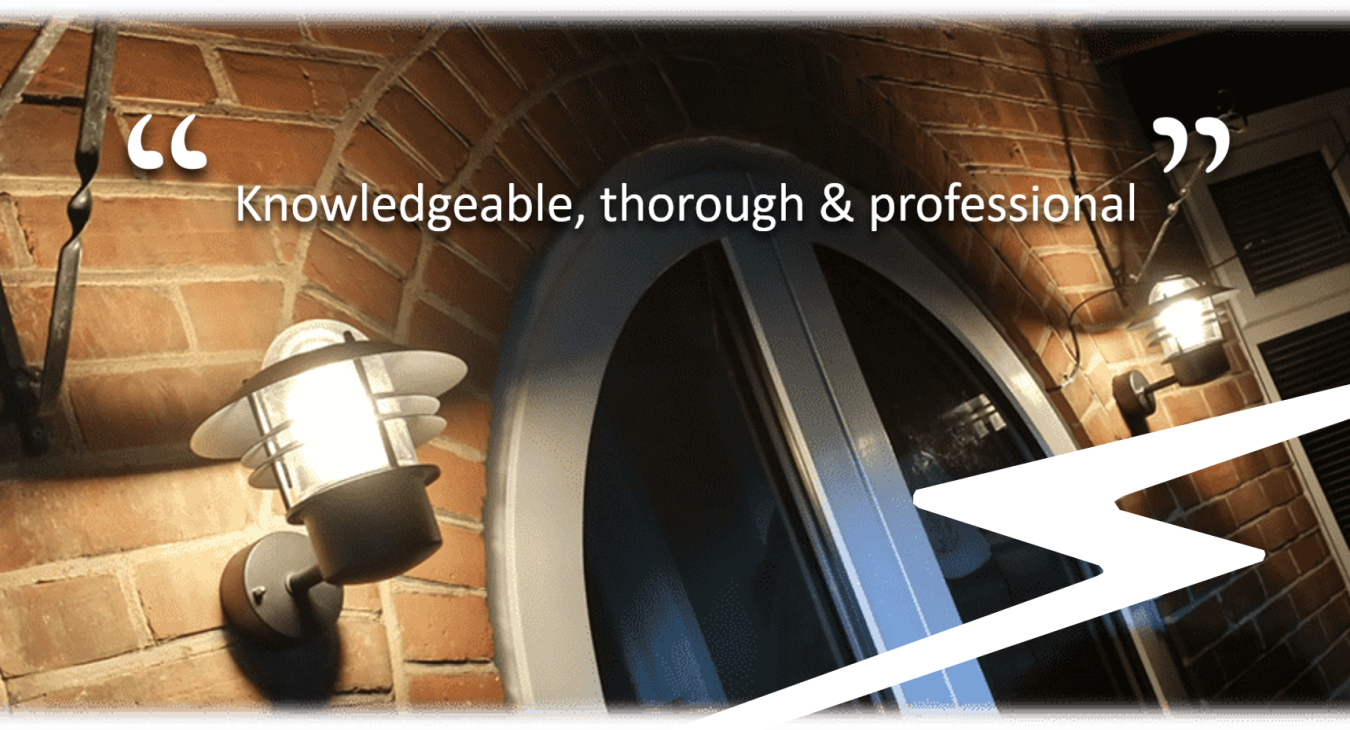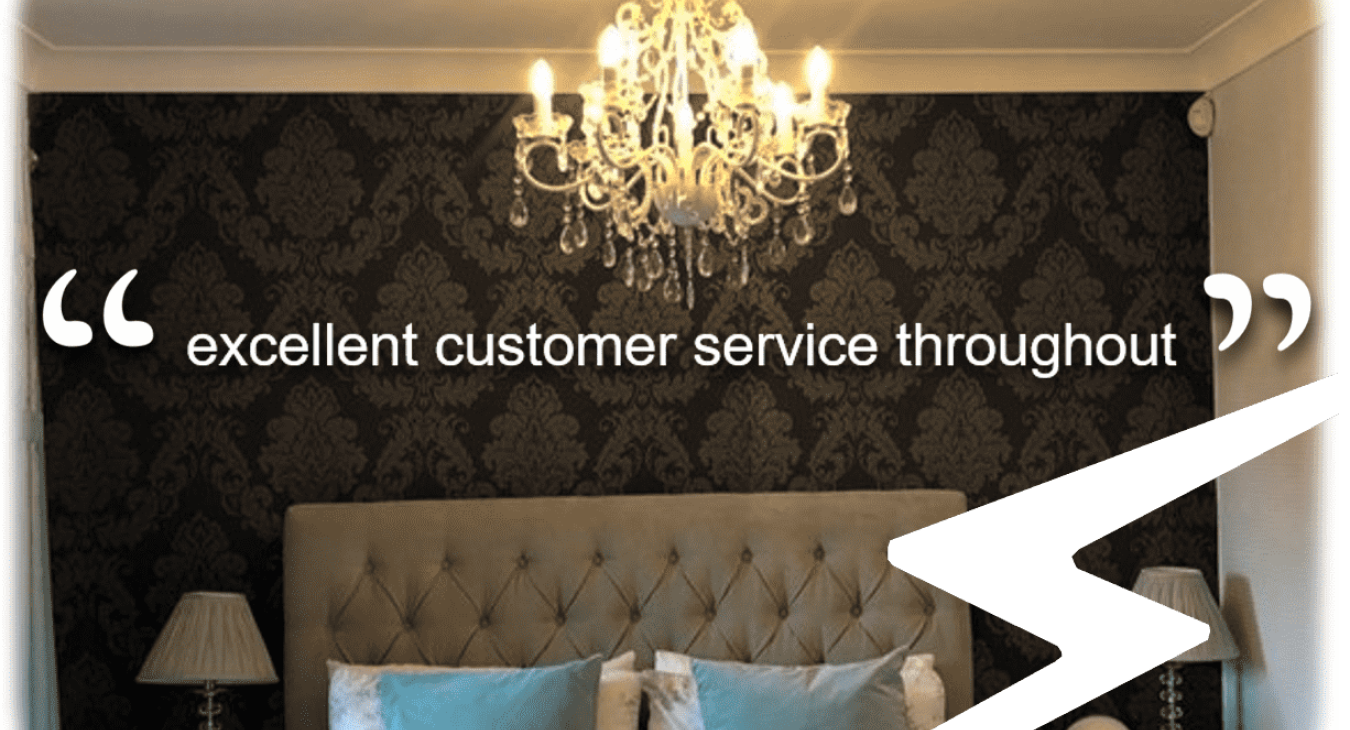Crafting Magical Mood Lighting: Tips, Ideas and Inspiration for Your Home
This comprehensive guide provides homeowners, interior designers, and lighting enthusiasts with top tips and techniques for crafting beautiful, yet functional mood lighting.
Learn how to select the perfect bulbs, fixtures, controls and colours to transform any residential or commercial space by creating the desired emotional atmosphere and mood.
Read actionable tips on wiring and installing mood lighting properly for maximum visual impact whilst maintaining safety.
Discover how to design customised mood lighting set-ups for specific spaces like bedrooms, bathrooms, kitchens and living rooms.
Take your lighting from merely functional to magical with this detailed mood lighting handbook. It covers everything from fundamental concepts to advanced smart home automation and voice control for your ideal customised lighting.
Understanding Mood Lighting and Why It Matters
What is Mood Lighting?
Mood lighting refers to intentionally using various lighting elements to create or enhance a particular emotional or atmospheric effect within a space. It goes beyond just illuminating a room to carefully crafting a desired ambience, mood, or vibe using lighting techniques.
Mood lighting considers all aspects of lighting design like fixture choice, bulb color, brightness levels, placement, and more. By combining and adjusting these elements, lighting can put people at ease, energise a space, set a romantic scene, or express any mood desired.
Benefits of Mood Lighting
Setting the proper mood lighting has many benefits for residential and commercial spaces:
- Sets an aesthetic tone or atmosphere to match activities or occasions
- Creates an immersive multi-sensory experience engaging multiple senses
- Can make people feel more relaxed, energized, even romantic, depending on the mood
- Provides psychological and even physiological benefits related to mood
- Adds visual drama, interest, and character to living spaces
- Showcases interior design features, colors, and decor more effectively
- Serves functional needs like safety and visibility in addition to mood enhancement
People innately sense and respond to lighting on an emotional level. Leveraging mood lighting principles allows the design of spaces that feel more inspiring and enjoyable to be in.
How Lighting Affects Moods
Mood lighting works because of the close ties between lighting conditions and human psychology. Factors like brightness, colour temperature, and patterns of light send signals that intrinsically influence mood and emotion.
Brighter, blue-toned light feels more energizing, which is why sunlight promotes alertness. Dim, warmer, reddish light feels calmer, signalling it's time to wind down. Use these lighting colours to your advantage when designing how the room should look like. A flickering candle light sets a completely different mood to a flashing party strobe effect.
Research shows ambient room lighting, even at relatively low intensities, positively impacts mood. The body's biological clocks and hormonal systems are also attuned to respond to light levels and colors.
If you can take advantage of these inbuilt reactions by designing lighting scenes aligned to a desired mood, or activity, you can optimise spaces to feel great and function well.
Tips for Designing Mood Lighting Setups
Choosing Fixtures and Lamps
Ambient Lighting - Provides overall general illumination. Popular styles of ambient lighting fixtures include:
Pendant lights that hang from ceilings to cast soft, diffuse light over an entire room. Drum pendants, chandeliers, and linear suspensions are common choices. Downlights recessed a ceiling are also frequently used for ambient lighting, providing bright, even illumination.
Task Lighting - Bright focused lights for working areas. Common task lighting fixtures include:
Desk lamps and table lamps, with adjustable heads, to point light where needed. Under cabinet lights installed on kitchen cabinets supply focused visibility for countertops. Track lighting allows you the flexibility of aiming spotlights to illuminate artwork or specific surfaces, even if they layout changes.
Accent Lighting - Creates emphasis and visual interest. Accent lighting fixtures include:
Low-voltage mini spotlights may be used to highlight architectural details, plants, or décor elements. Wall washers placed near walls or ceilings provide soft diffused grazing light to really pick up on those wall features. LED strip lighting outlines and traces interesting contours and textures. Picture lights illuminate displayed artworks, photos, or signage.
Decorative Lighting - Ornamental fixtures as design elements. Decorative lighting fixtures include:
Sparkling crystal chandeliers that add elegance and refinement. Colorful stained glass wall sconces provide artistic flair. Modern geometric pendants make unique sculptural statements. Whimsical lighting shapes like birds, flowers, or boats bring playful personality.
When choosing what style light fittings you may want to select for a given mood, also think about layering lighting at different heights - ground level uplights, table lamps, wall sconces, pendant lights, recessed/track LED strip lighting. Combine adjustable, directional fixtures with fixed general lighting.
Picking Bulbs and Smart Lights
The bulb or light source has a major impact on the light's color, brightness and effect. Consider options like:
- LED bulbs - Energy efficient, long lasting, RGB, dimmable
- Himalayan salt lamps - Warm pinkish glow
- Smart bulbs - App controlled, RGB colours and effects
- Flame bulbs - Simulate a flickering fire
- Vintage filament bulbs - Nostalgic traditional light bulbs
Match bulbs to the mood you want to achieve. Smart RGB LEDs are now available at scale which can offer colour tuning. This would make changing light colours and scenes to match activities or occasions an easy task.
Dimmers, Switches and Controls
Convenient control systems enable effortless adjustments to mood lighting:
- Wall dimmers - Manual light level control
- Smart switches - App, voice, or automation enabled
- Remote controls - Quick access around the space
- Smart home hubs - Centralized or voice activated control
- Timers - Schedule automatic lighting changes
Use dimmers to smoothly shift lighting brightness and mood. Added smart home tech such as LED bulbs with Alexa and google integration adds convenience and accessibility for lighting control far beyond just voice control.
Wiring Considerations
Be clear on what you are envisioning at the design stage, and put in place a plan to make the wiring futureproof to accommodate changes of plans. Proper electrical wiring enables running multiple lighting elements on different switches and circuits for the best mood lighting control:
- Use two-way switch setups for fixtures controlled from multiple locations
- Put different room zones or types of lighting on separate dimmers or switches
- Use switched outlets to control plug-in lamps
- Upgrade electrical panel if needed to add circuits
Hiring a registered electrician to handle the wiring ensures it's up to electrical code and ready to support the lighting setups you're dreaming of.
Creating Specific Moods with Lighting
Romantic Mood Lighting
Set just the right mood for a romantic dinner, evening, or getaway with these lighting tips:
Use lower general illumination
Keep ambient light levels lower for romantic lighting. Avoid bright overhead lighting, and instead, use lamps on side tables and consoles to cast a warm glow over the space. Dimmer switches and dimmable RGB bulbs will allow you to not only control the light levels, but also the light colours, allowing you to bring out the sunset oranges and reds in your mood lighting to suit the scene.
Light two taper or pillar candles on the dining table
Candlelight adds flattering ambience, so placing two taper or pillar candles as centerpieces on the dining table sets a romantic mood. The warm flickering glow holds a treasured feeling in all our hearts.
Illuminate decor elements like flower vases discreetly
Use accent lighting to discretely draw attention to romantic decor elements. Small LED or incandescent lights aimed at floral centerpieces, vases, and other decor make them focal points without being obtrusive.
Install dimmer switches to match the brightness to the mood
Dimmer switches enable you to effortlessly shift the lighting in the room to your desired brightness as the night progresses. Smooth dimming capability allows you to find just the right intimate level of light.
Add muted accent lighting aimed at artwork or architectural details
Strategically placed accent lighting on artwork, architectural mouldings, or other details such as bare brickwork, adds depth and visual interest. Using muted, soft accent lighting maintains the relaxed ambience.
Shine accent floor lamps to softly highlight seating areas
Position adjustable floor lamps behind seating areas like sofas and aimed at the wall to create a subtle backlighting effect. This puts a soft spotlight on the seating area whilst avoiding glare.
Use natural flame candles for authentic flicker effects
The key is to make the lighting feel soft, intimate and warm to spur an emotional connection. create a cozy ambience with dim, enveloping light. You can use smart bulbs to mimic the natural flicker of real candles for a more familiar, natural lighting effect. The dynamic light subtly engages the senses and makes the ambience feel more alive.
Relaxing Mood Lighting
Help people unwind and de-stress with lighting designed to promote calmness:
- Use free-standing floor and table lamps for ambient light
- Select bulbs or use RGB smart lights with warmer colour temperatures such as warm white, orange ored for a relaxing mood lighting effect
- Install dimmers and control brightness levels
- Up-light a relaxing water feature or greenery to set a serene mood
- Minimize bright overhead and task lighting
- Accent the space with salt lamps or flame bulbs for natural effects
- Cast wall-washing lighting to avoid harsh shadows
Uplifting Mood Lighting
Boost spirits and energy with the following approach to uplifting mood lighting:
- Use brighter bulbs and colours like cool white and daylight white
- Add extra task lighting to work areas and reading nooks
- Accent décor and art pieces to dazzle and inspire
- Incorporate smart RGB lights for added flexibility to colour choices
- Install lighting controls like dimmers to create vibrancy
- Maximize natural light exposure during the day
- Add mirrors and reflective surfaces to brighten space
Vibrant, variable lighting keeps the energy and mood high.
Dramatic Mood Lighting
Make a bold visual statement and set the mood for parties with dramatic lighting:
- Use dimmable smart RGB bulbs capable of bold colours
- Backlight transparent or translucent decor elements
- Illuminate surfaces indirectly to avoid glare
- Install strip lighting or rope lights under shelves
- Highlight architectural features like ceiling beams or textured walls
- Arrange directional spot or track lighting to model surfaces
- Cast interesting shadow patterns using accent lighting
Dramatic mood lighting elicits an emotional "wow" reaction. Take your lighting to the next level with some of these ideas for maximum visual impact.
Mood Lighting for Different Rooms
Bedroom Mood Lighting
Bedrooms can be very versatile spaces. Follow these tips to make sure you're getting the most out of your lighting:
Install a captivating centerpiece light fixture with smart RGB LED light bulbs
The centre light will dominate the rooms aesthetics, so do your best to choose a light that really promotes the space, but flexible enough to accommodate all the different scenes you might want to cultivate. Couple this with a Varilight dimmer, or better yet, LED RGB light bulbs, and you'll be well on your way to bringing the perfect experience with your mood lighting setup.
Dimmable RGB LED light bulbs are the ultimate way of creating contemporary mood lighting, simply because of all their features. They can often be voice controlled, they can reduce light levels, and even change colour, from pink to blue, from green to red. What more could you need for a simple mood lighting solution?
If you have downlights, preferably tilt-able downlights, the same applies!
Add accent lighting aimed at peaceful art or plants
Accent lighting elements like wall sconces or directional spotlights aimed at soothing artwork, flowering plants, and other calming décor helps relaxation. If you're using accent lightin, keep it subtle by using low wattage bulbs.
Use portable bedside lamps to customize reading light
Bedside table lamps with adjustable heads and necks, such as swan neck lights, and dimmers give personalized control over your reading light while lounging in bed or in the seating area.
Hide away task lighting at a vanity desk area
For a bedroom vanity or desk, install subtle task lighting like small fixed or adjustable lamps to provide light right where needed without brightening the whole space. Mini spotlights could be perfect for this.
Set relaxing sunset lighting scenes with a smart bulb and app
Use smart RGB bulbs and lighting apps to program customizable "sunset" scenes that gradually shift from brighter daylight to dimmer, warmer dusk tones and the evening goes on. It is scientifically proved that warmer lights, such as sunset lighting, promotes relaxation and gets you ready for bed.
Incorporate candles or smart flame bulbs for ambience
The visual flicker of real or simulated candle flames adds a classic, romantic ambience perfect for a master bedroom. Place candle holders around the room or use smart RGB bulbs to create that mood with candle-flicker modes.
Use a Himalayan salt lamp for calming pink glows
Himalayan salt lamps emit a soft pinkish glow that many find peaceful and soothing. Their warm hues help the bedroom feel like a calming sanctuary.
The bedroom is key for rest and relaxation. Let mood lighting gently ease people into peaceful slumber or set a romantic scene.
Bathroom Mood Lighting
You can really bring your bathroom to life and conjure the perfect mood lighting when you put effort into the designs for your new bathroom. read further for some ideas for how you can make that happen.
- Choose a strong centrepiece light, or create a pattern of downlights Centrepiece lights really capture the vibe of a room, and really make the mood or break it. Find a light with multiple bulbs that can really bring the lighting up to beaming, and the dimmer will handle the low lighting. Aside from what you might picture as a normal bathroom light, you can also get your hands on WiFi enabled, bluetooth speaker, spaceship lights! Yes, you guessed it. All the techy bells and whistles. All the colours, all the light levels, and you can even play music through your phone! If none of that takes your fancy, what about flush mounted spot lights in the ceiling, accompanied by a flush mounted bluetooth speaker? They are out there! Don't forget according to building regulations, places with a bath or shower are considered special locations, and any electrical works in these areas are notifiable. Plus there's a whole chapter of special measures required for bathrooms in the electrician's British Standard Book! Counsel with your electrician to ensure what you have in the bathroom conforms with rules and regulations.
- Install dimmable lighting to set just the right brightness Because the bathroom is used for both grooming and relaxing, the most critical part to mood lighting in the bathroom is having a luxurious style to it, and that includes the the light fixtures, and being able to dim them from full beam down to a little glimmer. You could use dimmable recessed spot lights, wall sconces, and vanity lighting in the bathroom to control the brightness and create the perfect relaxing ambience. Dimmers allow adjusting the light to your mood and needs.
- Use accent lighting to model bathtubs or create depth Strategically place accent lighting like mini spotlights to model and highlight the bathtub. Grazing the tub, walls, and any wall niches with accent lighting adds depth, dimension, and visual interest.
- Add mirror lighting for soft, even illumination Install lighting around the mirror or medicine cabinet to provide soft, even lighting ideal for grooming. Wall sconces, rope lighting, or built-in vanity strips all work well. Beyond just a standard light up mirror, there are plenty of other features available on the market, including lit mirrors cabinets, de-mist functions, and even integrated shaver sockets!
- Accent decorative features like textured tiles or wallpaper Use discreet accent lights to draw attention to any decorative tile, stone, wallpaper , and other features that add character. Let mood lighting showcase the details of your dream bathroom.
- Use waterproof fixtures like LED strip lighting to accent without risk Not only can you utilise LED strip lights in the bathroom to provide a glow from behind cornice coving, Waterproof LED strip lighting allows safely accenting wet areas like along the tub or shower enclosures. The right lighting makes even utilitarian bathroom fixtures feel spa-like. Technology has advanced so much in recent years, RGB LED strip lights are readily available, and can come WiFi ready and controlled via remote, on an app, and some variants can even dance to music!
- Incorporate candles or flameless candle bulbs for a relaxing vibe Cluster candle holders or add smart bulbs with candle-flicker settings to bathrooms for soothing, serene ambience. The warm glow and therapeutic flicker enhances the spa-like atmosphere. Be careful, though. Contrary to popular beliefs, open flames are still a fire risk in a bathroom - we've seen the after photos of bathroom incidents!
With strategic mood lighting, ordinary bathrooms can turn from the bright white washing facilities into relaxing sanctuaries.
Kitchen Mood Lighting
- Layer ambient, task, and accent lighting for versatility Combine general ambient lighting like pendant lights or recessed cans to brighten the full kitchen. Add task lighting like undercabinet strips to illuminate work zones. Use accent lighting to highlight decor and architectural details. Layering all three makes the space fully functional and visually interesting.
- Use dimmers to control brightness levels to match any occasion Install dimmer switches on key kitchen lighting circuits to easily control the brightness as needed for different occasions and times of day. Dimmers create flexibility and allow finding the perfect light level.
- Showcase décor like fruit bowls or shelving with accent lights Use small accent lights or mini spotlights to illuminate and draw attention to decor elements and collections on open shelving or counters. Lighting makes even mundane items like fruit bowls or cookbooks feel like intentional design statements.
- Illuminate dining areas without too much harsh overhead glare Avoid harsh overhead lighting directly above dining tables. Instead, use centrepiece decorative lights hanging above tables, wall sconces flanking the eating area, and accent lighting on nearby decor to provide soft, inviting illumination for dining.
- Install undercabinet LED strip lighting for great task visibility Discrete undercabinet lighting provides ideal visibility for food prep tasks on countertops and illuminates work zones beautifully. LED strip lights mount easily and provide great accent lighting too.
- install overcabinet LED strip lighting for a glow effect that matches the mood Much like undercabinet lighting, but for a wholly different purpose. Instead of lighting up kitchen work surfaces, we're aiming to be creative by adding an extra layer of lighting.
- Highlight architectural details like exposed beams with directional lighting Use delicate directional spotlights or track lighting to accentuate interesting architectural details and call attention to design features like exposed beams, textured walls, or decorative hoods over cooktops. You could also you a string of mini spots for the same effect.
- Allow smart lighting scenes to shift moods from day to evening Incorporate smart bulbs and lighting controls to easily program customizable scenes like Bright Task Lighting or Evening Dinner Party. Scheduling automatically shifts the kitchen lighting based on time of day.
- Make use of hanging lights over the kitchen island to really portray the wonderful layout of your kitchen
Thoughtful mood lighting can make kitchens feel more like cozy gathering places at dinner times and when you are entertaining guests.
Living Room Mood Lighting
Include ample ambient light for general illumination
Use ample ambient lighting like a confident ceiling light fixture, or recessed ceiling lighting, table lamps, or floor lamps to brightly illuminate the overall living room space. Ambient lighting provides the baseline of illumination for general visibility and prevents shadows.
Use smart bulbs capable of preset lighting scenes
Incorporate smart LED light bulbs or panels that can be controlled via app or voice and programmed with customizable lighting presets for different living room activities. Create scenes like "TV Time" or "Dinner Party" for one-touch light setting.
Add accent lighting to create focal points around the room
Strategically place accent lighting like directional spotlights or picture lights to highlight and draw attention to key living room focal points like artwork, shelving displays, architectural details, and furniture groupings.
Backlight or sidelight entertainment systems and shelves
Install lighting directed at the wall space behind or beside the TV, entertainment consoles and shelving/bookcases to add a subtle backlighting glow that makes the systems and objects on the shelves stand out visually.
Meet reading needs with directional lighting in sitting areas
Add dedicated lighting like adjustable directional floor or table lamps positioned specifically to illuminate sitting areas, chairs, and sofas for reading or other close tasks without casting glare.
Control lights via smart home integration and voice control
Use smart home hubs, smart speakers, or smart assistants to enable hands-free voice control or automation for living room lighting based on preset "scenes", schedules, activities, time of day, and more. Extremely convenient for a busy person!
Set lighting schedules to fade up slowly in the mornings, and down in the evenings
Program living room lights with smart scheduling to gradually and automatically brighten in the mornings to softly illuminate the space and ease you into the day ahead, and later into the day when we're all starting to wind down, you will be able to appreciate the slow transition into the night.
Careful living room lighting choice will allow you to really go for the mood you're trying to foster for any activity: Hosting guests and socializing, reading, watching TV, or just relaxing!
Incorporating Colour into Mood Lighting
Colour Temperature
Warm white light (<3500K) feels cozy and relaxing
Warm white light in the 2700K to 3500K color temperature range feels inviting, cozy and encourages relaxation due to its red/yellow tones reminiscent of firelight or candlelight. Warm white light is ideal for living rooms, bedrooms and other relaxing spaces.
Cool white light (>5000K) is energizing and promotes alertness
Cooler white light above 5000K temperature adds blue tones that provide more contrast and visibility. It feels crisp and energizing, helping improve alertness and productivity. Use cool white light in kitchens, workspaces or other active areas.
Daylight (5000-6500K) mimics natural sunlight
Daylight or bright white light in the 5000K to 6500K range closely matches natural sunlight. It provides vivid illumination, helps with tasks and routines, and regulates circadian rhythms. Use daylight white light in bathrooms, basements or where natural light needs boosting.
Use smart bulbs to access a variety of colour temperatures
Smart light bulbs with tunable color temperature allow easily adjusting the white light warmth and coolness via app or voice control to set the desired mood or energize as needed throughout the day.
Combine warmer and cooler tones in different fixtures
Layer both warm white and cool white bulbs or fixtures in complementary spaces to balance relaxing and energizing lighting. For example, use warmer lights in seating zones and cooler lighting in work areas.
RGB Colour Effects
- Use colour to set moods - red is exciting, whilst blue is calming RGB LED lighting allows you to choose specific colours from a huge selection to match desired moods. Blue colours hep the room feel lively and exciting, while red hues start to create a peaceful, calming effect.
- Sync lights to music or video content via apps Specialty lighting apps allow syncing smart RGB lights to react in sync with music, movies, or games played on home media systems. Lights can pulse and change colours to follow the beat, action, and imagery.
- Save and activate lighting "scenes" with smart assistants Configure RGB lighting presets like "Dinner Party" or "Movie Night" and control them on command using smart assistants such as Alexa or Google. Voice activated preset scenes make changing the mood lighting in your property as simple as can be.
- Use colours to accent décor or architecture Use RGB lighting's flexible colour-changing capabilities to creatively accent décor elements, artwork displays, textured walls, and other interior design features by bathing them in hues that complement their colours.
- Adjust colours automatically by the time of day Program RGB lighting setups to shift colours along with light levels based on the time of day, fading from cool energizing midday hues to warm relaxing evenings hues to support circadian rhythms.
Advanced Mood Lighting Techniques and Technology
We have already mentioned the advanced smart lights and smart bulbs, readily available on the market, that can absolutely reinvent your rooms to suit all the mood lighting choices you'll ever need. To recap on some of the snippets and have it all in one place:
- Use smart switches and bulbs for control via app, voice and smart home control Smart switches and bulbs that can connect to home automation systems enable controlling mood lighting via smartphones and tablets, smart speakers with voice assistants, and centralised smart home hubs for your convenience.
- Create preset lighting "scenes" like Dining or TV Time Program unique lighting scenes, optimised for specific occasions and activities. Customise brightness levels, RGB bulb colours, and fixture settings into presets like "Dining", "TV Time", or "Party". Activate your customised scenes any time with the press of a few buttons.
- Set schedules to shift lighting by time of day or activity Use automation capabilities to set lighting schedules that can automatically change the brightness, colour, and activated fixtures based on the time of day and household routines for added convenience.
- Control groups of lights to change moods by zone Group smart switches, bulbs, and fixtures into separate mood lighting zones. Control groups independently to easily shift lighting scenes and ambience between, say, kitchen and living room areas.
- Activate lighting remotely even when away App and voice control of mood lighting allows adjusting the ambience and brightness conveniently from anywhere, even when away from home. Come home to a well-lit house, and bamboozle those burglars whilst you're away on holiday.
Syncing Lights to Music or Video
Syncing mood lighting to audio or video content amplifies immersion:
- Use apps to pulse lights to music beats and bass
- Match colours to video content like movies or games
- Create dynamic effects like fades and flashes
- Design unique lighting "routines" for different media
Zonal Lighting
Divide a space into separate lighting zones for more control:
- Zone by room sections - dining area vs sitting area
- Zone by fixture type - ambient vs accent lighting
- Put each zone on separate smart controls
- Adjust zones independently for multi-purpose spaces
Smart Scheduling
Scheduling automated lighting changes enhances function and mood:
- Program the intensity and colour temperature of morning wake-up lighting
- Shift to brighter task lighting for work times
- Fade to relaxing warm lighting in the evenings
- Simulate occupancy with randomized lighting when away
Let timed lighting harmonize with human circadian rhythms and usage patterns.
Safety Tips for Mood Lighting
Electrical Safety
Please consult an electrician when you're thinking of installing complex lighting systems. It takes a lot of design, planning and good workmanship to make lighting systems safe, function as expected, and look as intended whilst doing so. Find an electrician who is experiences in mood lighting and other complex lighting projects, and you absolutely need to approach an NICEIC registered electrician if the lighting project involves working on the electrics in the bathroom. For more information regarding NICEIC registered electricians and their benefits, please see our very own article detailing the answers to every burning question you may have around the subject of the Electrical Safety Register and Building Control Notification












